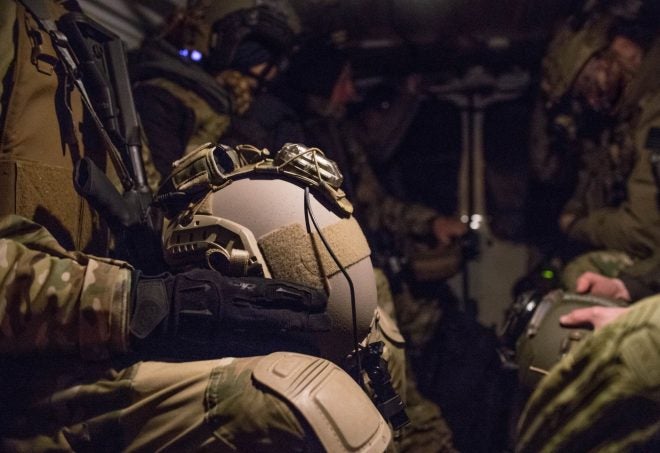Ops Core
Ops Core has long been known for their bump and ballistic helmets and was gracious enough to send me an XP Ballistic Fast Helmet for review. Also included was the new eye protection offering called the step-in visor.

Shown is an Ops Core XP ballistic helmet with the new Step-In Visor.
Ballistic Vs. Bump Helmets
For many a ballistic helmet is a large expenditure and while they want to run night vision or have a level of head protection, an MSRP of $1380 can create a cost barrier. Those simply wanting a handsfree option without the need for ballistic protection can save weight and cost by purchasing a bump helmet. A bump helmet still protects the user’s head from impact, but is not tested and rated specifically for ballistic impact. Bump helmets also have openings that allow for better breathability.
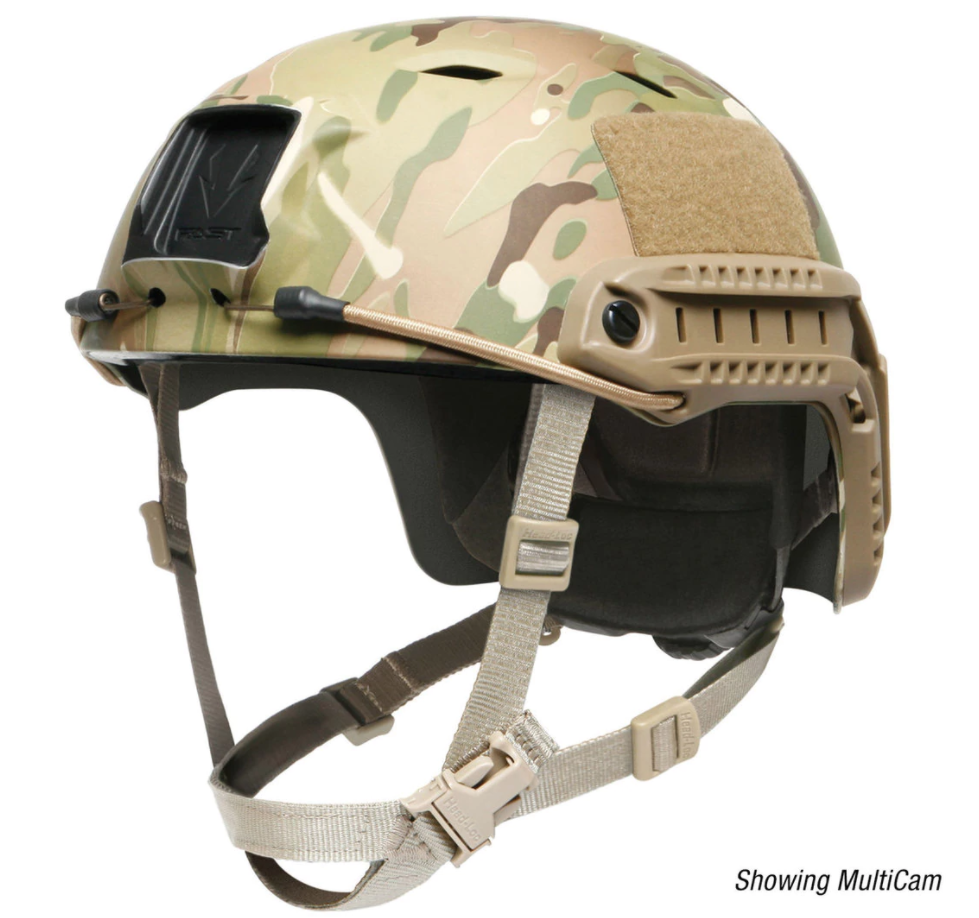
The holes in the top of this bump helmet help with both weight reduction and breathability.
Variants
The Fast XP helmets come in multiple sizes, colors, and configurations. They can be purchased in Urban Tan, Foliage Green, Black, Multicam, or Desert MARPAT in Medium, Large, X-Large, and XX-Large. Sizing is important for best fit and comfort. Follow the steps from the manual as shown below.
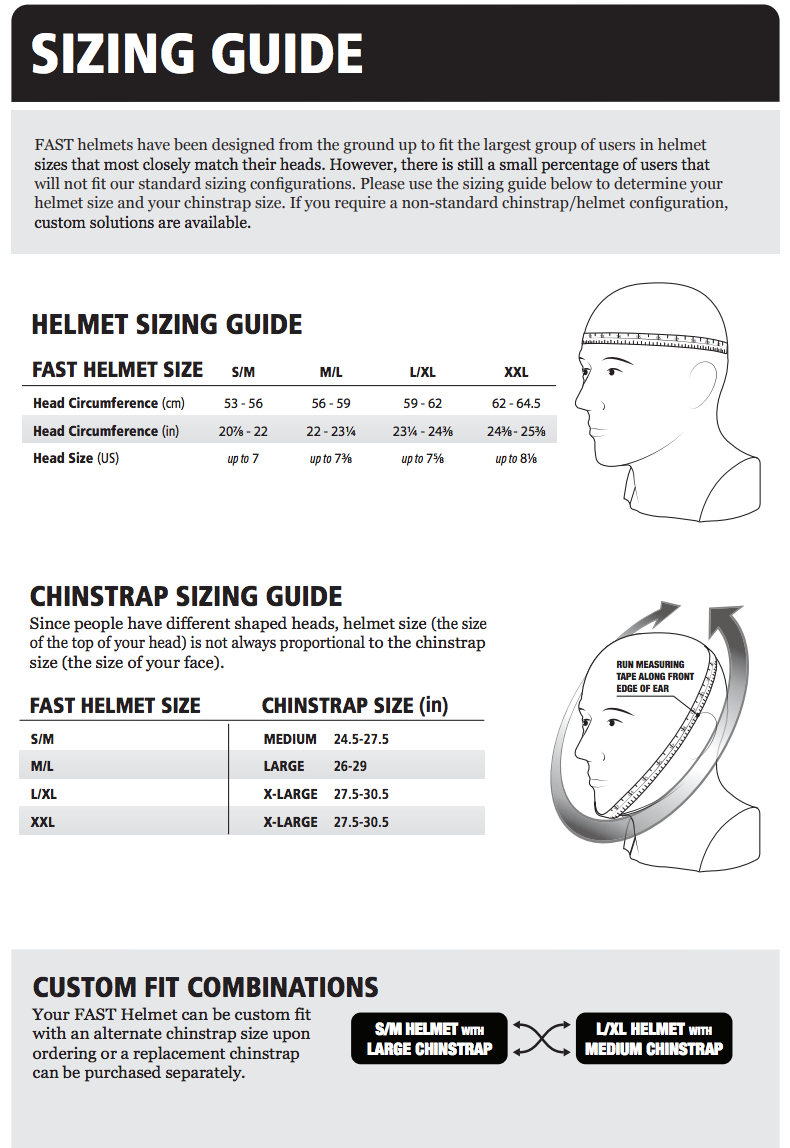
Ballistic Application
For those using the helmet professionally or training junkies attending shoot house courses, a ballistic helmet is often required. Many will probably be used to the weight of an ACH or MICH helmet. The Ops Core Ballistic helmets are significantly lighter in an attempt to reduce fatigue and reduce compression experienced by the user. While often times ballistic helmets are used with rifles, they are not specifically rated or special threat tested to stop direct fire from rifle rounds. The ratings for the ballistic protection pertain to a 9mm full metal jacket at a particular velocity and the helmet’s Resistance to Penetration (RTP) and Backface Defamation (BFD) results. Other important tests pertain to blunt impact protection, compression testing, and environmental resistance. OpsCore helmets meet the standards for Socom-level protection testing standards.
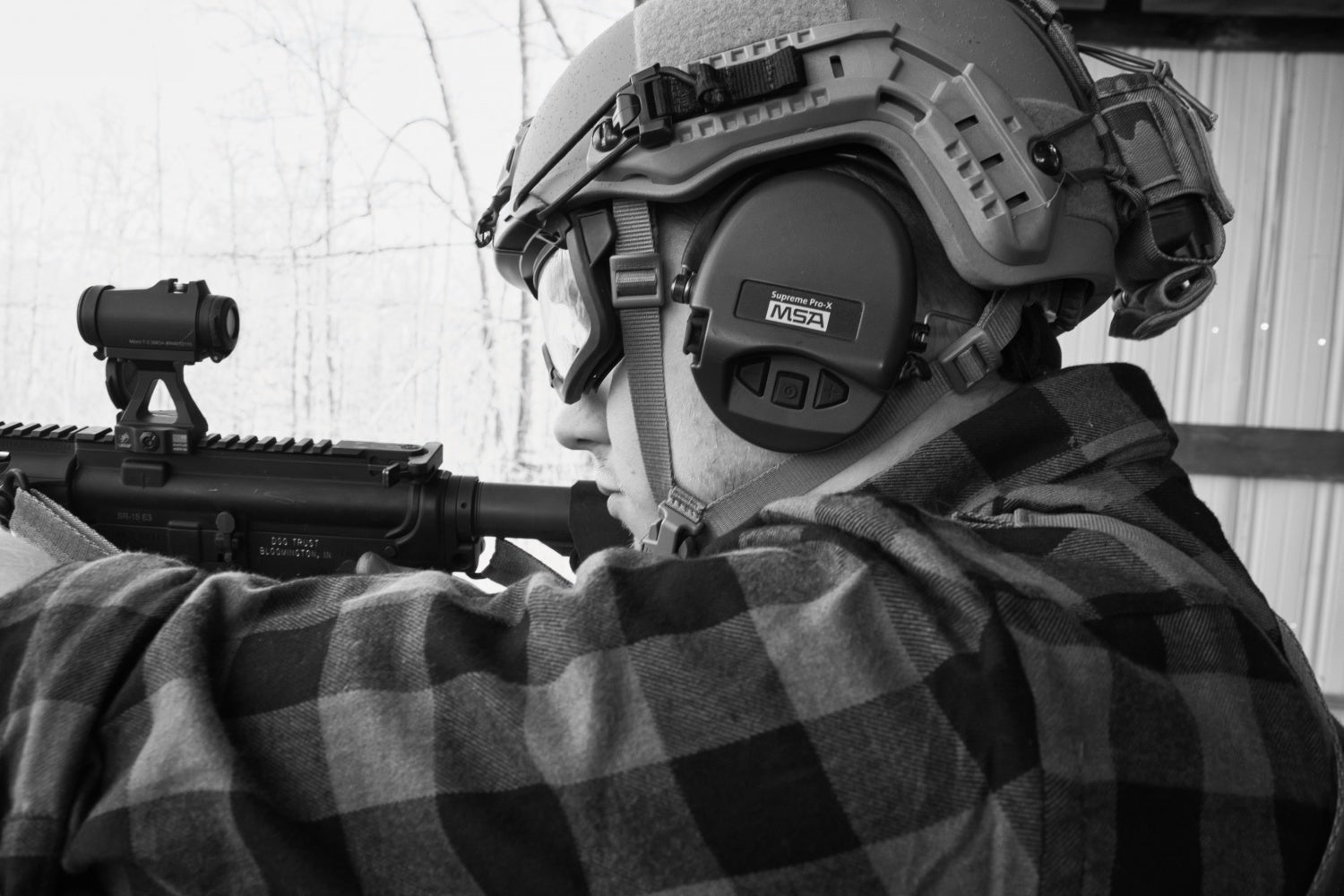
This helmet provides ballistic protection in a light weight package.
Fit and Feel
Helmets are very similar to shoes for fit and feel. What may feel perfect for one person may be completely uncomfortable for someone else. The helmet I tested was an XL and weighed in at 2.01 LBS. before accessories. I exclusively used this helmet for 10 range trips so far as well as TNVC’s 3 day Night Fighter Armed Professional Course so I have had periods up to 5 hours straight wearing the helmet.
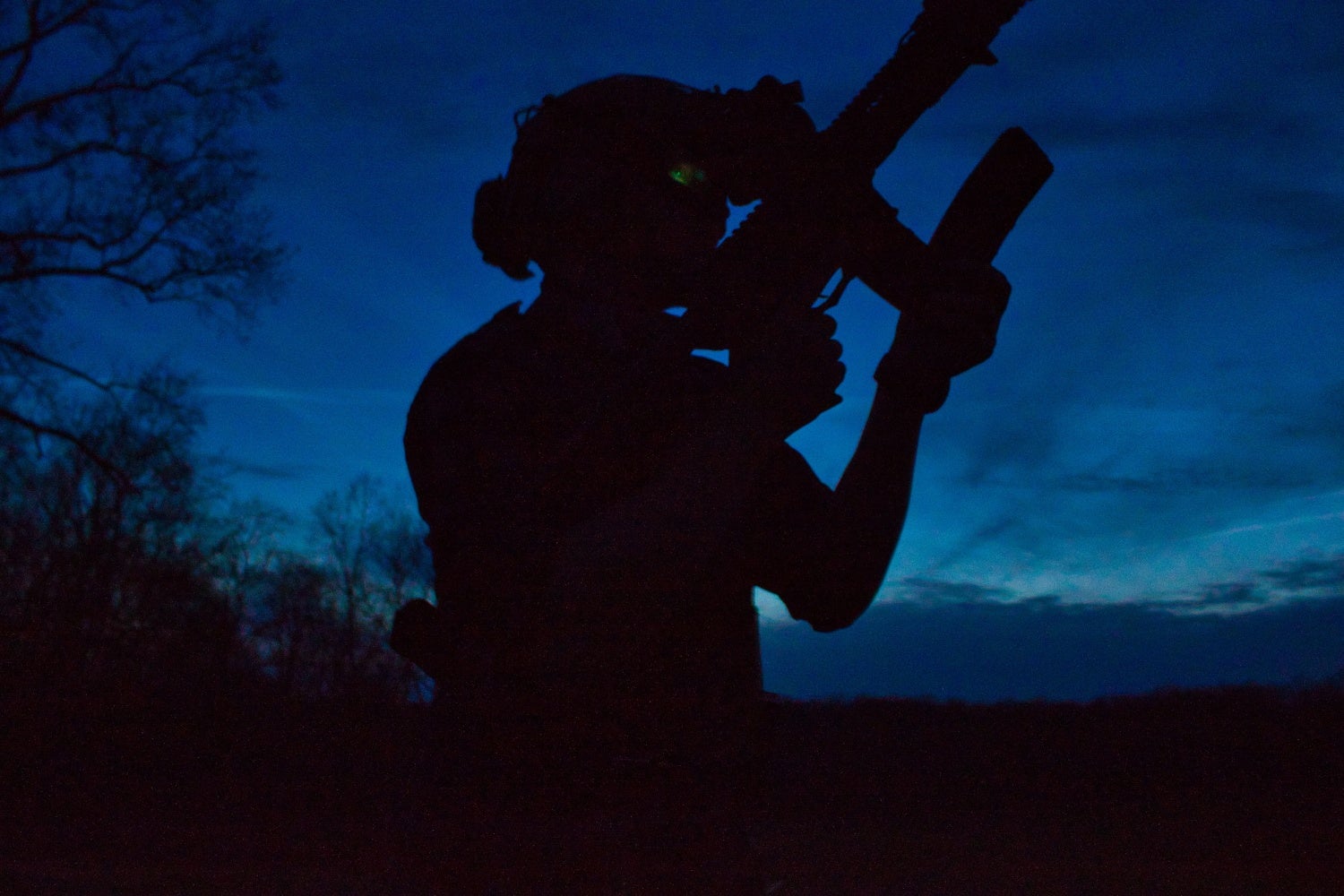
My XL helmet only weighed 2.01 LBS. and was very comfortable even when used for extended periods of time.
For short periods of use I noticed no hot spots or issues with discomfort. My ear protection used was a set of MSA Sordin Supreme Pro X muffs with gell cups. After about 3 hours I started to feel hot spots from the Sordins as well as two spots on the rear of the helmet. This is a problem that is easily fixed as there are other pads that can be used both from Ops Core and other companies to achieve the perfect fit and feel. Many users also will not often wear the helmet for such extended periods and will not notice any issues at shorter lengths of use.
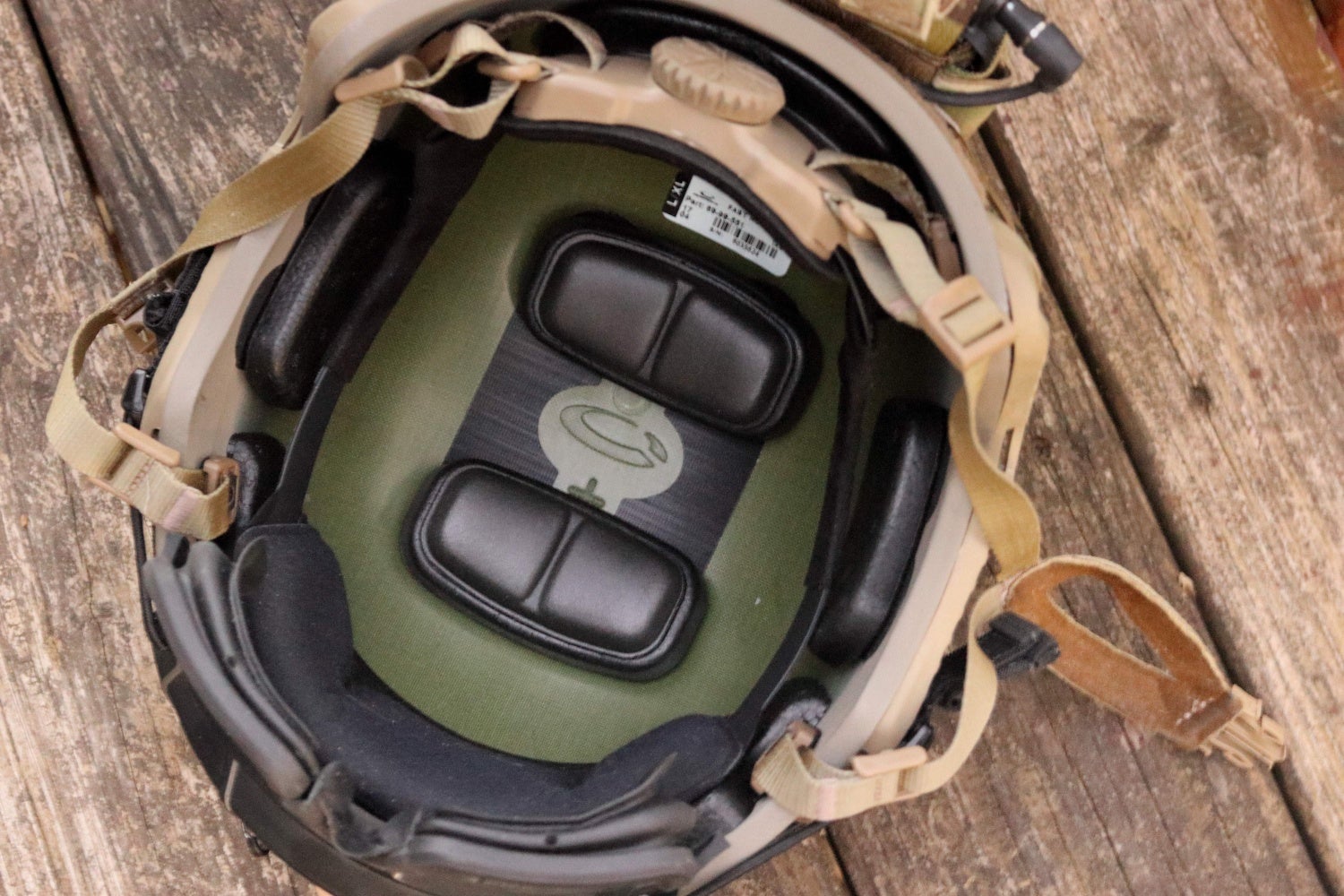
Multiple pads are included with the helmet to provide for the most comfortable fit.
The Occ-Dial is also an important facet of fit and feel for the helmet. The design is very similar to that of a hard hat and as the dial is turned the band tightens or loosens until the proper tension is set.

The OCC Dial greatly contributes to the stability of the helmet.
The fitband also was designed to allow for Sordins or Peltor headbands to be fit beneath the fitband and worn on the inside of the helmet itself.
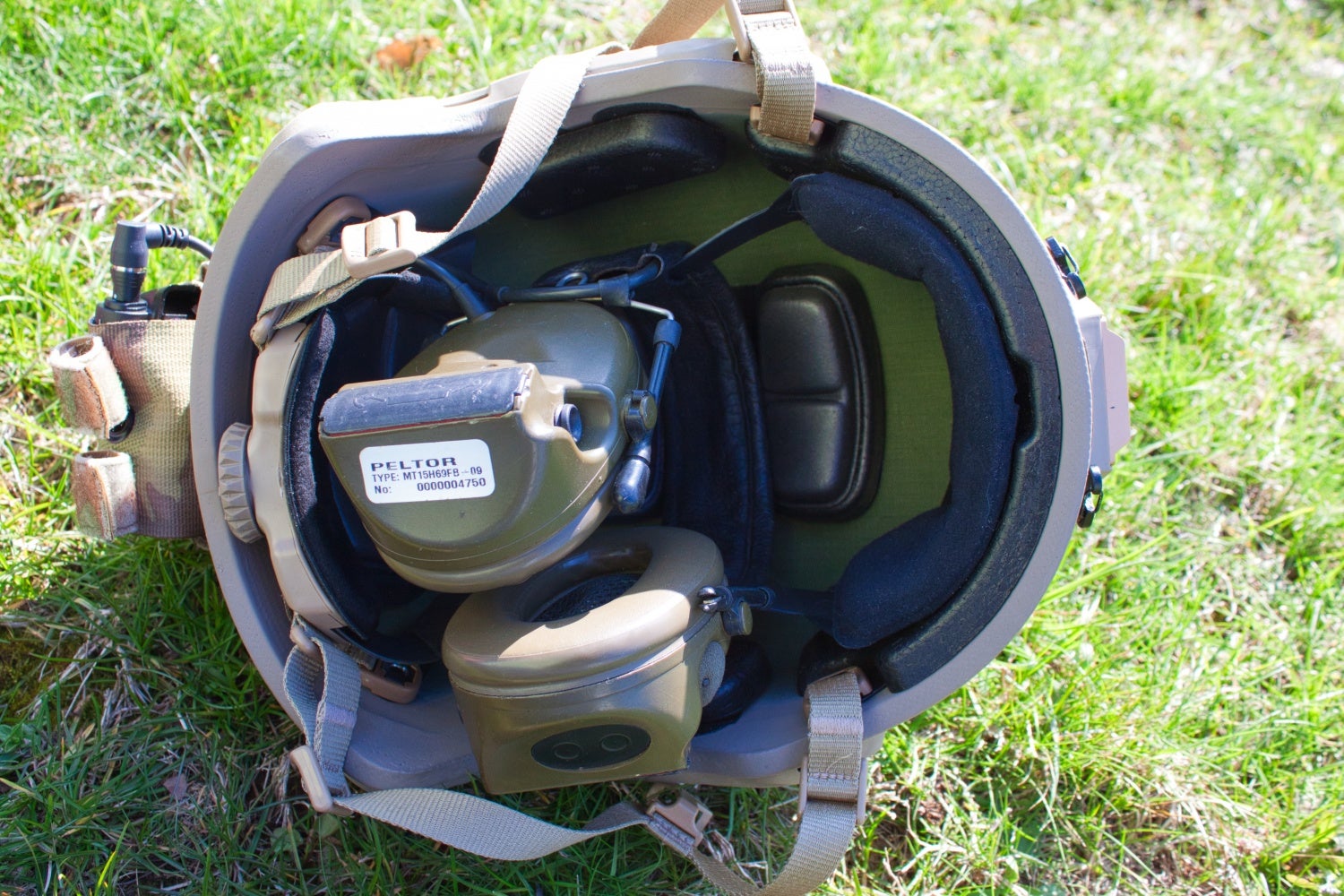
The fitband allows for ear protection to be worn beneath the helmet. Fit will be different for each user but I personally did not find this a comfortable way to wear my hearing protection.
I personally did not like using the Peltors inside the helmet using the fitband. It was somewhat difficult to get everything aligned and not as comfortable, but it is nice to have the option available.
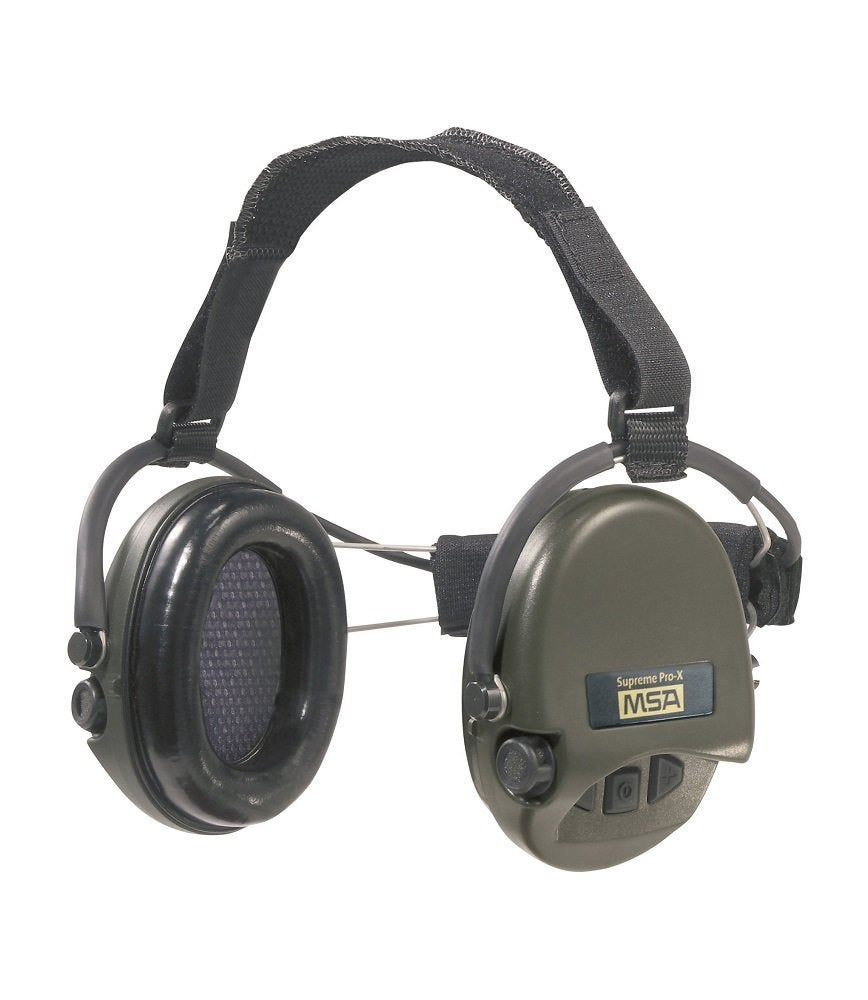
These Sordin Supreme Pro X are what I used primarily and could be worn with our without a helmet. The helmet can simply be worn on top with no discomfort.
Mounting Hardware
The Fast XP helmet I tested came with the Mount Bungie System (MBS). This system was released at shot for the new SF line of helmets and has also been retrofitted to previous models. The benefit provided is that the bungie now is not connected to the Accessory Rail Connector (ARC) rails, but more localized to the shroud so that there is less bungie exposed and reduces possibility of a snag hazard.
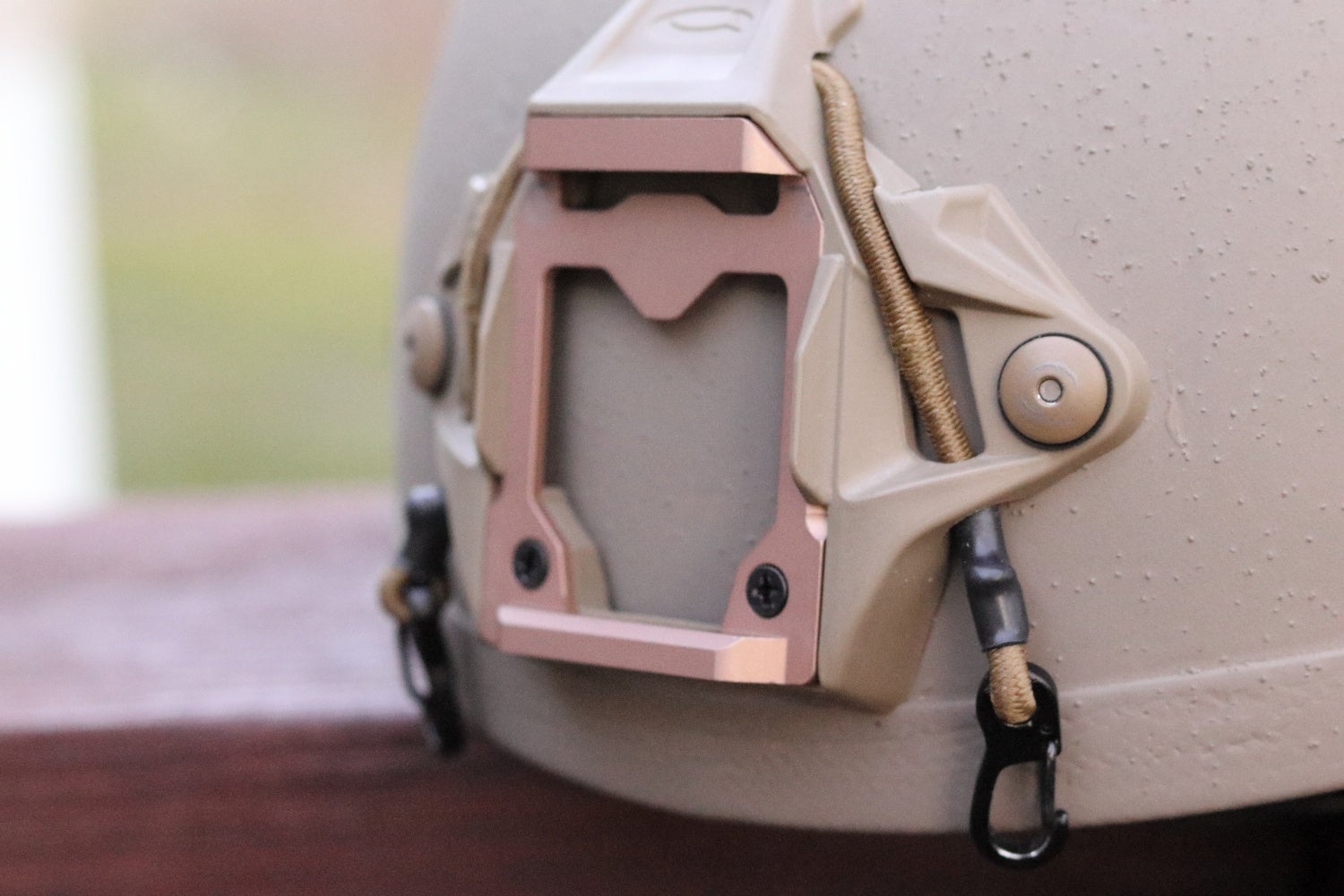
This closeup shows the new bungie system included in the shroud.
The shroud has the addition of a removable aluminum insert. While testing I was using a Norotos INVG mount with a PVS 31A. With the expense of NODs and the sensitive nature of the technology it is important it is not lost or dropped. The bungee system is a great insurance policy to work as a second means of retention. They also helped stabilize the night vision as the shroud does not provide a tight fit to the INVG mount.

The bungie system works as an extra means of retention for NODs and reduces play from the insert.
The ARC rails also come with the XP helmet, providing a host of options for attaching accessories from mandibles and eye protection to go pro cameras and light sources. The screws in the ARC rails provide a great option for securing accessories. The connection can be seen with a TNVC Mohawk as shown below.
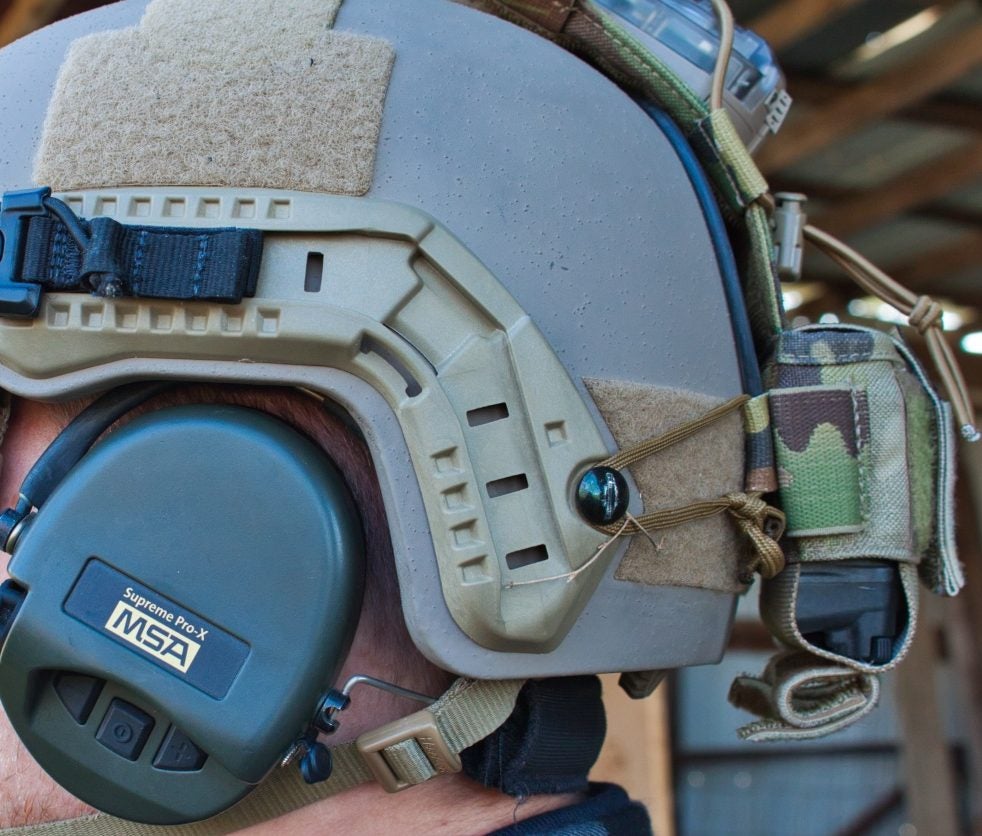
Notice how the screw provides added retention for the Mohawk System.
As you can see, with a string of gutted 550 cord the Mohawk can be positively secured to the helmet. This gives a secondary retention option instead of solely relying on velcro to retain accessories such as strobes, battery packs, etc. For more information on the TNVC Mohawk click here.
Velcro
The loop velcro on the helmet is not as plentiful as I would like. However, it is really a non issue as many run a helmet cover. This gives a much larger amount of velcro real estate. The new SF helmet series does have a more generous amount of loop velcro as well. It is in more numerous but smaller sections of velcro in shapes designed to break up the thermal signature.

Here is an example of the velcro pattern as seen on the new Ops Core bump helmets. Also seen is the integrated bungie system in the shroud.
Conclusion
Over all the helmet has been a great piece of kit. It provided a comfortable way to run NODs hands free while providing the required level of protection for shoot house courses. I would personally suggest considering an Ops Core helmet if you are in need of a bump or ballistic helmet. If budget is not the primary concern, I also would suggest checking out the new Ops Core SF and Carbon helmets. These were shown this year at SHOT Show 2018. They are the latest in Ops Core’s lineup. Both boast a lighter weight and better velcro pattern with improved ARC rails and integrated MBS system.
 Your Privacy Choices
Your Privacy Choices
